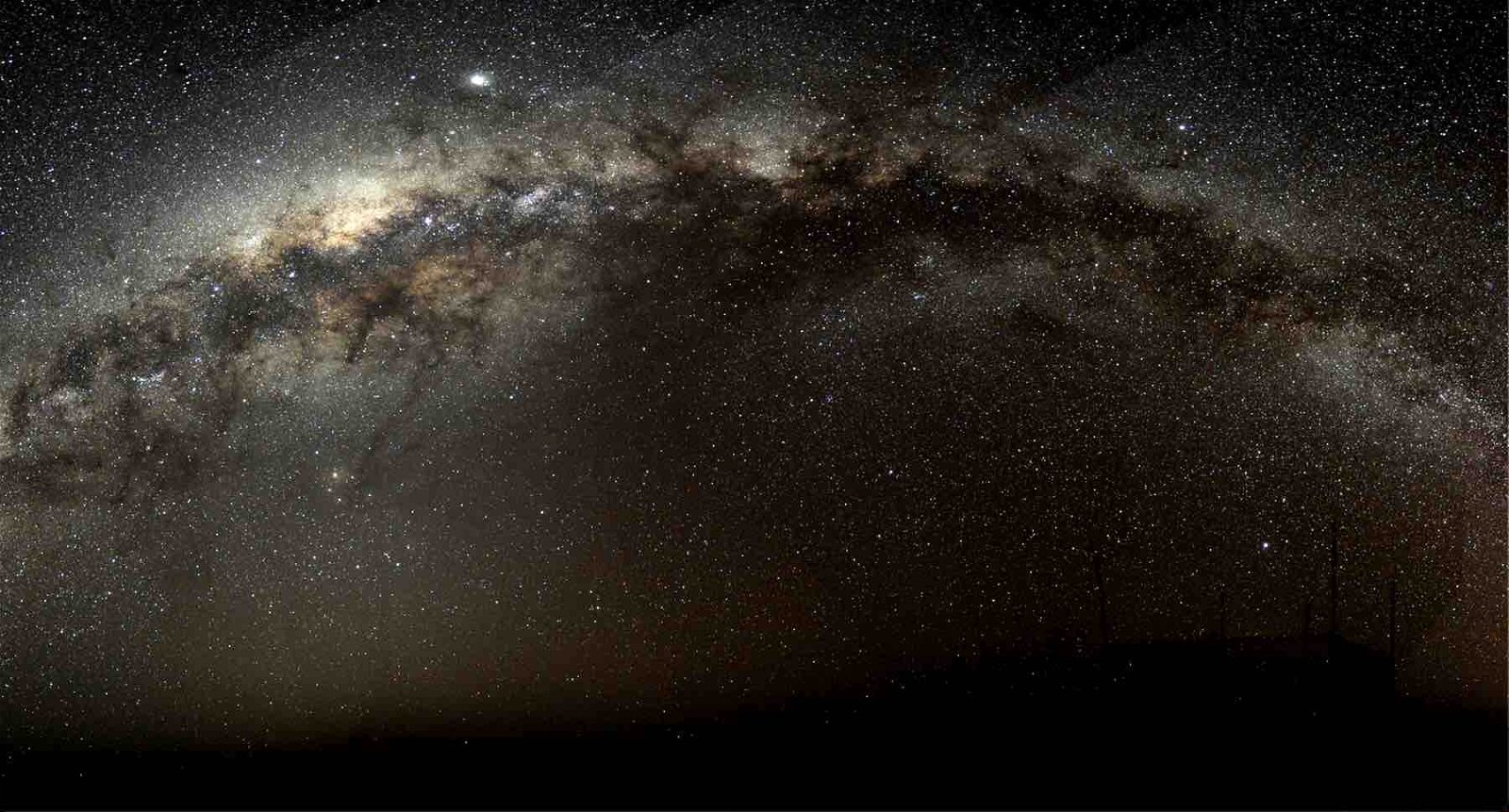A mysterious force is warping the entire Milky Way Galaxy, causing it to bend like a folded disk in space, and no one knows why. This same mysterious force also causes the edges of our galaxy to flare like a skirt, and previous efforts to understand the warping effect have remained inconclusive.
Now, a team of astronomers from Harvard University thinks the phenomenon may be caused by a “tilted halo” of dark matter surrounding the entire galaxy.
Astronomers have long known that the Milky Way is surrounded by a diffuse cloud of matter known as a stellar halo, but it was only last year that Harvard astronomers confirmed the halo was tilted and elliptical in shape. Still, this halo, which the researchers described as “zeppelin or football-shaped,” lacks enough matter to cause the obvious gravitational force warping the entire galaxy.
Nonetheless, one clue to this warping comes from previous theories that suggest the Milky Way was actually the result of two galaxies that slammed into each other billions of years ago, resulting in our lone galaxy and the warped halo of material surrounding it.
“If the galaxy was just evolving on its own, it would have had this nice, spherical halo, this nice, flat disk,” said study lead author Jiwon Jesse Han, a Griffin Graduate School of Arts and Sciences student, and a member of Harvard’s Center for Astrophysics (CfA). “So the fact that the halo is tilted and has a football-like shape suggests that our galaxy experienced a merger event, where two galaxies collide.”
With that concept in mind, the CfA research team built stellar models and calculated the orbit of stars, only with the added effect of dark matter as a main component of the halo. According to the newly published study, the team found “a near-perfect match” to previous observations of a warped, flared galaxy.
“A tilted dark halo is actually fairly common in simulations, but no one had explored its effect on the Milky Way,” said co-author Charlie Conroy, a faculty member at the CfA and a professor in the university’s Department of Astronomy. “It turns out that the tilt is an elegant way to explain both the magnitude and direction of our galaxy’s wobbly disk.”
Milky Way Galaxy Theory May Help Explain Mysterious Nature of Dark Matter
While astronomers, astrophysicists, and cosmologists infer the presence of dark matter in our universe due to its gravitational effects on all other matter, they have yet to measure the material directly. Still, nearly all researchers in this field agree that dark matter and its companion dark energy not only exist but represent at least 80% of all matter in the universe.
Many attempts to measure or detect dark matter directly have failed, but if the researchers behind this latest study are correct about a halo of dark matter surrounding the Milky Way Galaxy, then the effects it has on stars and planets may offer previously unavailable insights into dark matter’s elusive nature. Specifically, the researchers note that their study may help identify the limits of dark matter’s gravitational pull on itself.
“(Our findings) might lead to better ways to cleverly study the unobservable dark matter that makes up most of the universe,” the researchers explain. That includes what they describe as entirely new methods of picking up on “kinematic signatures of dark sub-halos,” which they further describe as “miniature dark matter halos zipping around the galaxy.”
“The fact that the galaxy is not spherical in our data implies that there is some limit to which dark matter can interact with itself,” Han explained.
Christopher Plain is a Science Fiction and Fantasy novelist and Head Science Writer at The Debrief. Follow and connect with him on X, learn about his books at plainfiction.com, or email him directly at christopher@thedebrief.org.

